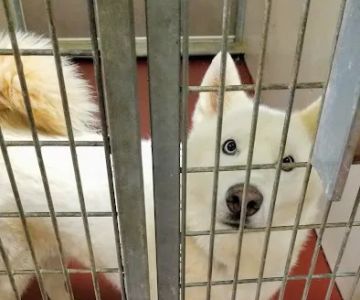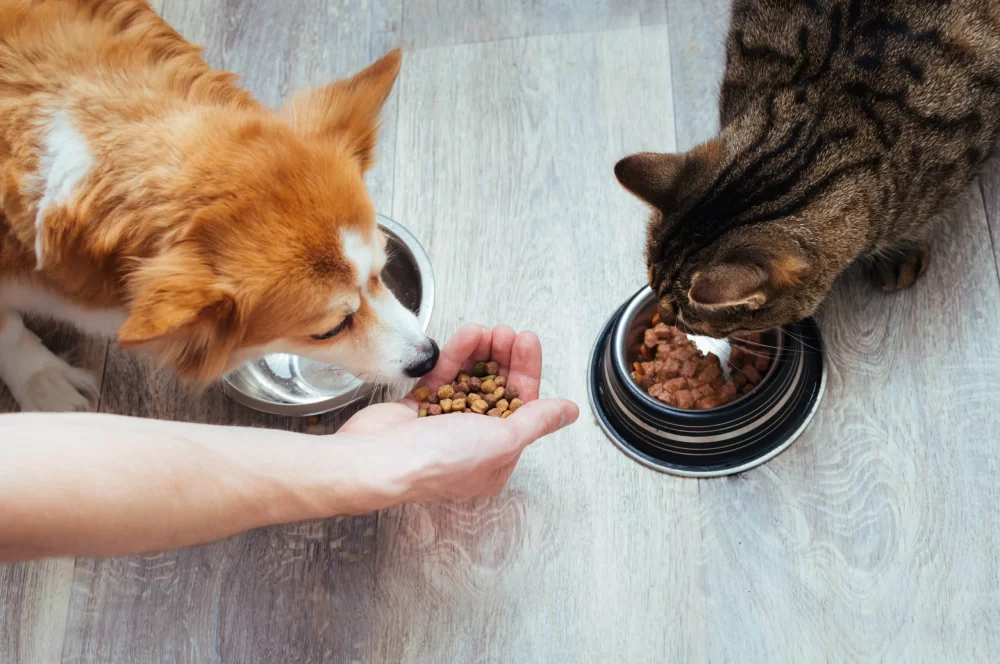Why a Healthy Diet Matters for Your Pet
As a pet owner, I know firsthand how important it is to maintain a healthy diet for our furry friends. It can be easy to overlook their nutrition, especially with all the available pet food options out there, but providing your pet with the right food can have a huge impact on their health and quality of life. I have learned that a balanced diet helps keep our pets energetic, prevent diseases, and maintain a healthy weight. Over the years, I’ve seen how proper nutrition can make a world of difference, and I’m excited to share the key steps I took to ensure my pets are eating well.
Understanding the Nutritional Needs of Your Pet
Each pet—whether a dog, cat, or other animal—has specific nutritional requirements. It’s essential to understand the basics of pet nutrition to provide them with the best diet. For example, dogs and cats have different protein and fat needs, while certain breeds may require more attention to their weight or food sensitivities. Over time, I’ve learned that choosing the right food based on my pet's age, breed, activity level, and health status is the best way to keep them in top shape.
When I adopted my dog, Max, I made sure to research the nutritional needs specific to his breed and age. Puppies have different dietary needs compared to adult or senior dogs. Similarly, my cat, Felix, requires a diet high in protein, as cats are obligate carnivores. This understanding helped me make informed decisions about what to feed them.

845 W Ridge Rd, Gainesville, GA 30501, USA
See DetailsChoosing the Right Food for Your Pet
One of the biggest challenges as a pet owner is selecting the right food. With so many options available—dry food, wet food, raw diets, and more—it can be overwhelming. Here’s what I’ve learned about choosing the best food for pets:
1. Check the Ingredient List
When I first started looking at pet foods, I didn’t fully understand the importance of the ingredient list. Now, I know that high-quality pet food should list protein as the first ingredient, followed by healthy fats, vegetables, and vitamins. For Max, I look for dog food that lists chicken, beef, or lamb as the primary source of protein. For Felix, I make sure the first ingredient is meat, such as chicken or turkey.
Avoid foods with fillers like corn, soy, and by-products, as these don’t provide much nutritional value. A quality food will have wholesome ingredients that support your pet’s health. While more expensive, these foods are often more nutrient-dense, meaning you need to feed less of it.
2. Age and Health Considerations
Another important factor when selecting pet food is your pet’s age, health, and activity level. Max, as an active dog, needs food that supports his high energy levels. I made sure to choose a formula designed for active dogs with higher protein and fat content. For Felix, who’s a bit older now, I transitioned him to senior cat food to support his joint health and provide fewer calories to help maintain a healthy weight.
If your pet has any medical conditions, such as allergies or digestive issues, it’s crucial to select food that caters to those needs. I once had to change Felix’s food after he developed a sensitivity to grain, and switching to a grain-free option made a significant improvement in his health.
3. Wet vs. Dry Food
Wet food and dry food both have their pros and cons. When I first got Max, I primarily fed him dry kibble because it was convenient and helped with his dental health. However, I eventually added wet food to his diet because it’s more hydrating, which is especially helpful for dogs like Max who can sometimes be prone to urinary tract issues. Wet food can also be more palatable, which is important if your pet is a picky eater.
Felix, on the other hand, tends to prefer wet food. I make sure to provide a balanced combination of both wet and dry food to give him variety, but I always ensure his meals are nutritionally complete.
Portion Control and Meal Frequency
One of the most important aspects of maintaining a healthy diet for your pet is portion control. Overfeeding or underfeeding can lead to various health problems. I’ve been careful to follow the feeding guidelines on the pet food packaging, but I also adjust based on Max’s and Felix’s activity levels. Max is an energetic dog, so he needs more calories than a sedentary dog of his size. Felix, being an indoor cat, doesn’t need as many calories and tends to gain weight easily, so I keep a close eye on his portions.
1. Use a Measuring Cup
When I first started using a measuring cup to portion out Max’s food, I was surprised by how much I was overfeeding him. Using a measuring cup has helped me ensure he’s getting the right amount of food for his size and energy level. It’s easy to assume that just because a pet food bag suggests a certain amount doesn’t mean it’s always right for your pet. A measuring cup allows for better control over their caloric intake and prevents overfeeding.
2. Feed Consistently
Both Max and Felix thrive on a consistent feeding schedule. I feed them at the same times every day to keep their digestion regular and to help prevent overeating. Having set meal times has also made them more comfortable around food and less likely to beg for snacks between meals.
3. Watch for Weight Changes
Regularly monitoring your pet’s weight is essential for making sure they’re on track with their diet. Over time, I’ve gotten into the habit of checking Max’s body condition regularly, making sure he’s neither gaining nor losing weight too quickly. Felix’s weight is something I monitor closely as well, especially now that he’s getting older. If I notice any weight changes, I adjust their food portions or consult my veterinarian for advice.
Supplements for a Balanced Diet
While most pet foods are formulated to be nutritionally complete, some pets might benefit from additional supplements. I consulted with my vet before adding any supplements to Max and Felix’s diet, as it’s important not to overdo it. Max, for example, takes a joint supplement because he’s a large breed dog, which can be prone to hip dysplasia. Felix takes an omega-3 supplement for his skin and coat health.
1. Omega-3 Fatty Acids
Omega-3 fatty acids are great for maintaining a shiny coat and supporting joint health. Both Max and Felix benefit from this supplement. It helps reduce inflammation and promotes a healthy coat. I add omega-3 supplements to their food a few times a week to ensure they get the benefits without overdoing it.
2. Probiotics
Probiotics can help maintain a healthy gut, and I’ve found them especially useful for Max, who sometimes has an upset stomach. Probiotic supplements support digestion and help your pet absorb nutrients from their food. If your pet is experiencing digestive issues, I recommend talking to your vet about adding a probiotic to their diet.
Hydration is Key
Just like with humans, staying hydrated is vital for your pet’s health. Max is always active, and Felix loves his cozy naps, but they both need plenty of water. I make sure Max always has access to fresh water, especially since active dogs tend to become dehydrated more quickly. I’ve found that providing multiple water bowls around the house makes it easier for both of them to drink throughout the day.
At Hidden Brook Veterinary, we offer expert nutrition advice to ensure your pet’s diet is tailored to their specific needs. If you're ever unsure about the best diet for your pet, our team is here to help you make informed decisions about your pet’s nutrition and overall health.











